|
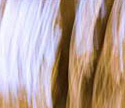
Left Brain-Right Brain Photography
Article and photographs by Karen G. Schulman
A friend and former photo student used to refer to the camera owner’s
manual as the "M" word. The anxiety she once felt with the
technical and mechanical aspects of using a camera decreased with experience
and practice, but there was a time when it stood in the way of expressing
herself creatively. Another workshop participant is extremely comfortable
with the technical side of photography and thrives on knowing all of
the specialized functions of his camera and lenses. He, on the other
hand, once had difficulty creating images that were little more than
documents of a scene.
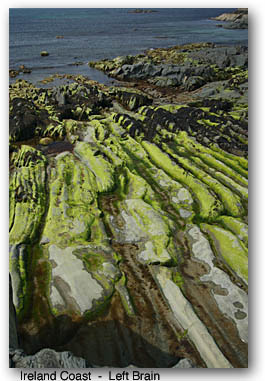
We are, as humans, a finely tuned combination of left and right brain
functions. All individuals are more or less intuitive, usually more
so in females than in males. For some, the ability of the right brain
to influence instinctual creativity is more accessible than for others
(often males) whose analytical or rational approach to making photographs
is more evident.
Photography offers us the opportunity to balance our thinking with feeling,
our intellect with intuition, as we respond to the world through our
images. It is a way of expressing ourselves artistically but with technical
competence.
Throughout my many years using a camera and teaching photography, I
have observed how differently each of us goes about learning to make
photographs. In addition to "seeing" our surroundings uniquely,
some of us are more "left" or "right" brained than
others. There is no clear delineation within most of us, we tend to
have strengths and weaknesses in both areas of brain functions, which
certainly impact more than our photography. Understanding how we learn
will aid us in overcoming our learning obstacles.
As you read through the descriptions below, see if you can identify
how similar each characteristic is to you. This will aid you in developing
the other side to be more "whole-brained," and consequently
more successful with your photography.
If the left mode is stronger within you, you may find that you examine,
explain and rationalize the subjects in your photographs. You may
come to photography with a sincere appreciation for its technical aspects,
and knowledge of the camera’s controls. You are certainly not afraid
of the "M" word! Left brain photographs show or tell a story
about a moment, event or place. They allow the viewer to understand
exactly what took place, and are more journalistic in their approach.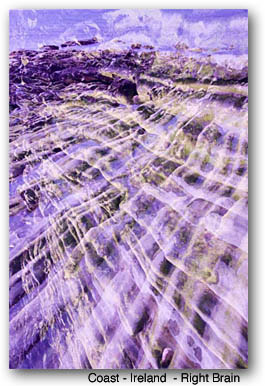
Those with a stronger right mode may spontaneously jump into shooting
a subject without much thought or planning. At first, technical
aspects of camera use are often weaker for you. Your approach to making
images might be to capture a sequence of time or document an action
through a personal or more abstract interpretation. When others ask
you to explain your photograph, you often have difficulty finding the
right words. Right brain photographs give you an opportunity to become
completely absorbed in your intuitive and impulsive side, which you
love!
Don’t confuse left brain photography with whether a person is thinking
or not. Right brain shooters think also. They just think differently,
in a less linear and more holistic way. Abstract pictures are often
a direct result of using the right brain. Reacting to your surroundings
without pre-judgment will result in images that reflect this aspect
of your creativity.
EXERCISE FOR DEVELOPING YOUR LEFT BRAIN PHOTOGRAPHY:
1. Experiment with aperture and shutter controls and write down
what you have done. Photograph one subject from the same location at
a variety of apertures to learn what each will look like. Keep your
point of focus consistent so that you will have uniform results. Do
the same with shutter speeds. Choose from some of the faster speeds,
1/250th to 1/1000th, and at the other extreme, 1/2 to 1/15th second.
Of course, your ability to use various settings will depend on the speed
of film you are using as well as type of lens, subject matter, available
light, etc.
2. Explore the technical aspects of your camera and be able to explain
how and why you employed them. As with the above, think about your point
of focus; why did you choose it? In what direction is the light coming
from? Did you use Matrix, Center-Weighted or Spot metering and why?
What are your reasons for composing horizontally or vertically?
3. Document a passage of time during your travels. You may choose
to add text to the images, as though you were submitting for publication.
4. Make a photograph of a person, trying to reveal the emotion
of your subject but treating your subject as objectively as possible.
Remember
to analyze your photographs after they are developed. You’ll
see how different techniques will yield varying results, and you’ll
be able to reproduce the results that work for you, in the future.
|
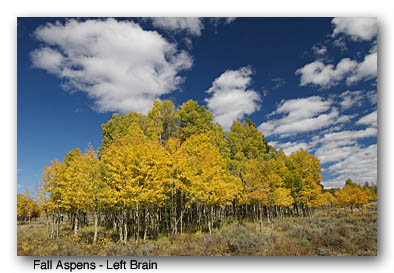
EXERCISES
FOR DEVELOPING YOUR RIGHT BRAIN PHOTOGRAPHY:
1. Break the rules! Take chances with aperture and shutter controls
while using Aperture and Shutter Priority modes. If you "think"
that you need f-22 for depth of field, use a wide aperture such as f-5.6
instead and change your point of focus. Set a slower shutter speed than
one that you would normally use for a specific shooting situation. Allow
yourself to make mistakes.
2. When you think you’re close enough, get closer. This
is one of my favorite suggestions for improving your seeing, and my
students tell me they hear me saying it when they are out shooting.
Moving physically closer to your subject or zooming in allows you to
create abstracts out of literal images and can show details which are
often overlooked in the larger picture.
3. Bracket your exposures widely. Over and under-expose your
subject at least 3 full f-stops for a roll or two of film to see what
happens. (I would not do this over an entire trip.)
4. If you are using a tripod for sharp images, occasionally shake
the tripod for a few frames. You may be pleasantly surprised!
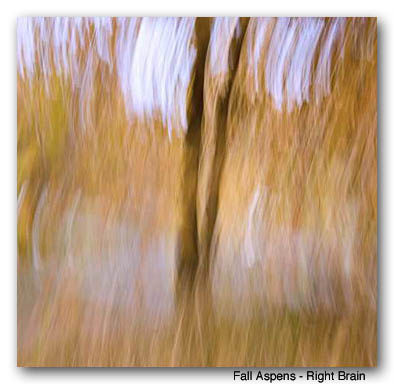
When
you look over the results of your experiments, remember to view them
in the same spirit as you created them. You may not like them all, but
some "mistakes" may turn into your favorites.
As you learn to use both hemispheres of your brain to make photographs,
a wonderful side effect occurs. The development of left and right brain
seeing crosses over to other areas of your life. Your visual intuition
expands and nurtures your intuitive responses to the world. And your
technical or mechanical abilities develop in other areas. Fine tuning
these combinations of thinking and feeling, intellect and intuition,
technique and aesthetic will help you to find your own vision and share
it with others. The camera owner’s manual, previously referred
to as the "M" word will just be another tool, not to be feared!
Karen
Schulman is a WIPI PRO member.
Focus Adventures Workshops and Tours
with Karen Gordon Schulman Since 1985, photographic artist and teacher, Karen
Gordon Schulman has been offering small group photographic adventures and tour
programs that emphasize using the camera as a tool in the process of self-discovery
and personal growth. "Our goal at Focus Adventures is to assist our photo workshop
and tour participants to develop inner strength and achieve personal growth through
the 'art of seeing'. We encourage people to give themselves permission to make
mistakes as well as permission to create. The more we learn to "see" with our
minds, hearts and spirits, the more of an adventure life becomes. Though the photograph
may be a "concrete" end result of the experience, it is only a part of the total
learning process. We welcome interested participants of all ages to take part
in our programs - whether they are age eighteen or eighty!"
Photo
tours in 2007 include:
Morocco in October,
Ecuador
and the Galąpagos Islands in May.
Photo workshops will take place in July
and September in northwest Colorado.
KAREN
GORDON SCHULMAN, WIPI PRO member (6-04)
|





